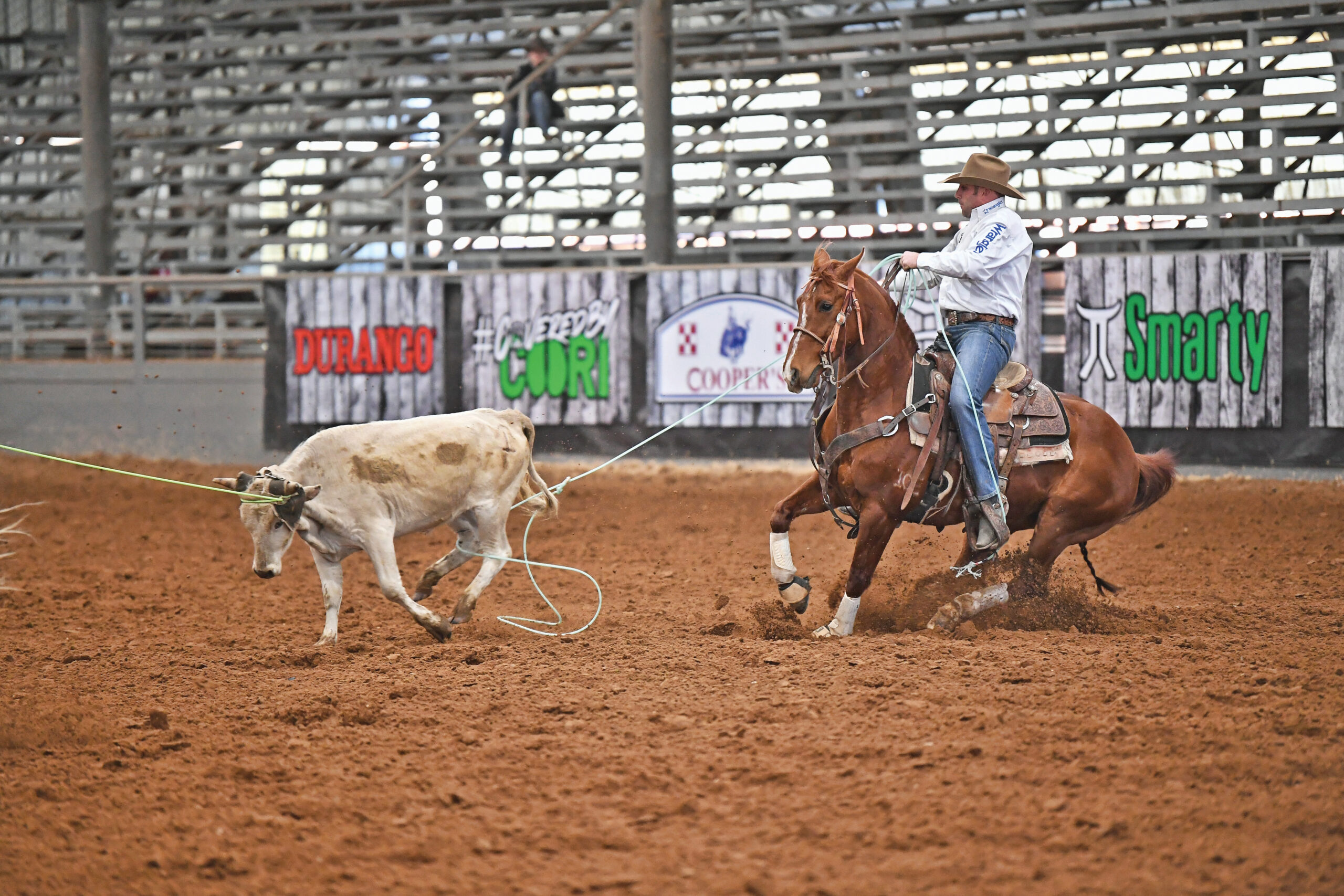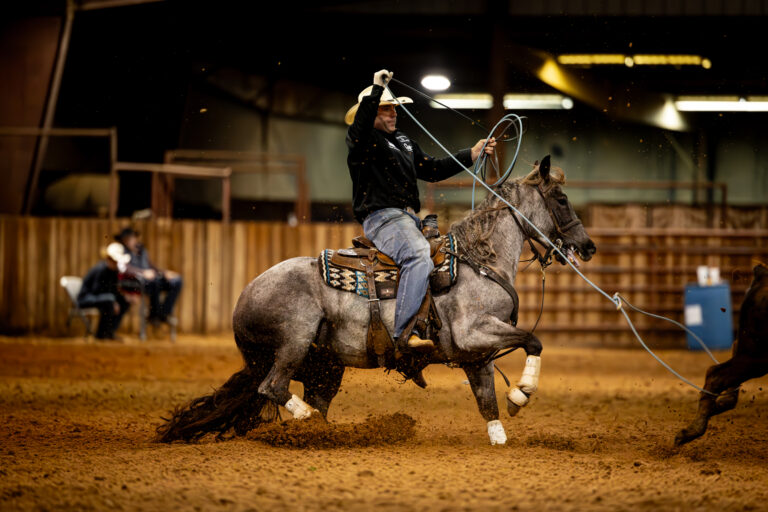I wanted to talk through this set of pictures from the Lone Star Shootout because of the heeling position I’m riding throughout this run.
I was heeling behind Luke Brown, who absolutely gives a guy some of the most predictably great spins in the sport. And these photos show my best-case scenario for spacing and timing through the corner and into the finish.

Heeling Position Into the Turn:
I like how I’m close enough to the cow to where I can heel him but, at the same time, I’m still far enough away that I’m not running into him. I can see the steer and, if something bad were to happen, I still have enough space to react. Here, I have started to come into the turn, and the steer has already changed directions pretty good. I’ve got my hand picked up, and I’m not doing a whole lot with my feet. I’m holding my horse’s shoulders up through the turn.

Heeling Position in Delivery:
I really like how my horse’s butt is down, and he’d tucked at his chin and not through his neck. That sure helps me get the loop down that you’re seeing right there. With his butt down and shoulders up, it makes my delivery a lot easier. You can see that he’s still moving and, with my loop not through the left leg yet, that keeps the loop going through. He’s stopping, but going forward, with his front feet walking through his stop. He’s staying forward enough in his stop to keep my loop going through the feet.

Heeling Position With Patience:
At this point, I’m trying to not get too excited and dally too early. If I were to go to the saddle horn too fast, I’d lose a leg. I’m watching the cow, and trying to be reactive. Sometimes, you can tell if the header is letting up and you need to hold your slack longer. That’s about muscle memory right there.

Pulling Slack:
This is really where I want him to stop. That keeps my loop open through the throw. Especially on that horse, his neck is so high. If I do pull on him early, his neck is in the way. I’m trying to be quiet with my left hand and not do too much with it. I’m trying to be quiet and get to the saddle horn. I don’t really know if it’s a good thing or not, but I separated my hands to take a little bit out of my slack. I’m pulling my coils out of my way to make more room for the saddle horn. Putting my hand to the left clears that out of the way for an easy path to the saddle horn. A lot could go bad doing that, but there’s slack in my left rein here. If you do too much, you could start your horse quartering.

Horse Position in the Stop:
I like that my horse’s butt is still down when I’m dallying. That sets him up to take the jerk and finish the run fast. The saddle horn is lifted up, and the finish is stronger. That will keep him from getting sore because he’s taking the jerk with his butt still.











